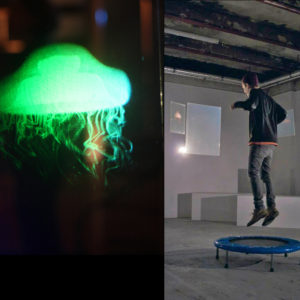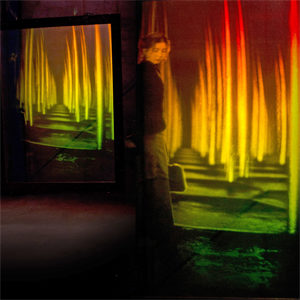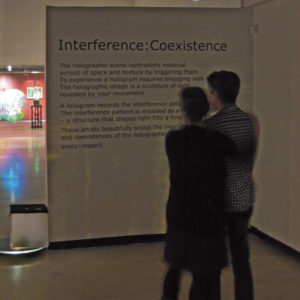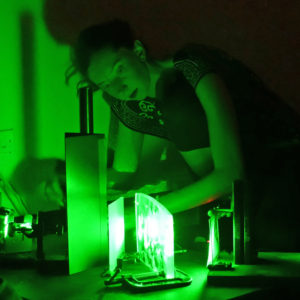The Emergent Holographic Scene
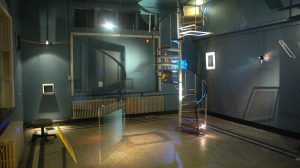
PostX Ghent, Belgium, 2011
Exhibition in conjunction with my doctorate The Emergent Holographic Scene: Compositions of Movement and Affect using Multiplexed Holographic Images.
Working with the medium of holography my doctoral research focused on the affect of a cross-referencing of movement in viewing multiplex holographic images. Completed with the Spatial Information Architecture Laboratory (SIAL), School of Architecture + Design, RMIT University, Melbourne, Australia.
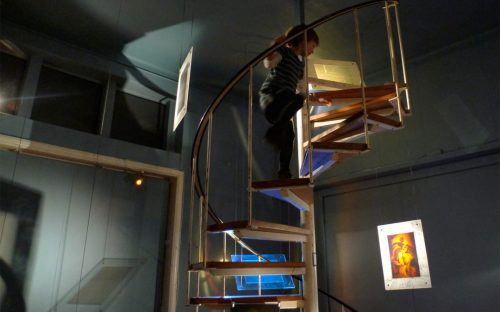

Since the multiplex hologram allows for the recording of virtual movement, such as a perspective that moves through a scene or an animation of the scene, and the viewer must move to activate this virtual motion there is a cross-referencing of the physical proprioception of motion and expected change in view with the virtual movement in the scene. My compositions use this affect to produce not only a visual sense of spatiality but also transformations in the perception of motion. An example is when the viewer’s physical movement sideways produces a visual zooming into and out of the scene resulting in a dynamic sense of form or perception. A spatially dynamic structure of perspectives arises from the coupled cross-referencing of perceived motion and is ascribed to the scene as an animate quality, adopted by the viewer as an extension of perception or in most cases is an oscillating and complex combination of both.
My investigation was developed around the experience of creating and viewing holographic images. The medium providing a framework through which a spatial and conceptual arrangement of images could be produced. The process of enfolding and unfolding connected perspectives in the capturing and viewing the holographic image became central to my acts of capture, compositions and installation designs. A relationship between the movement of the photographer and movement of the viewer, anchored around a visual pattern or physical path was used to produce a sense of dynamic shaping. I considered my holographic image mappings as a hyperlinked terrain, a scene emanating from anchored visual elements or paths of movement.
The dynamic and spatial qualities of the holographic scene emerging through the process of capture/composition/installation by drawing on the viewer’s perceptual experience. The holographic image compositions allowed me to open up and explore the intersection of multiple perspective scenes and the sense of being located. My worked developed an understanding of perceptual shapings to the experience of motion by incorporating a sense of potential action and conceptual connection into a complex understanding of what it means to be located. The experience of being lost and feeling located being used to explore the alignment and misalignment sensory perception. This understanding drew on the activity of mapping – the conceptual sense of place that map could provide and record as well as how this sense was connected to an understanding of being ‘here’ physically and ‘here’ on the map or within a visual scene. This extended yet connected sense of location I considered analogous to how virtual motion could be incorporated into the experience of moving around to view a holographic image.
A key aspect of my work is to link the viewer’s sense of moving around and exploring the image to the photographer’s activity of capture. While there is an implicit perspective positioning to all image recordings from a camera, I wanted to show the activity of capture as an act of looking that is not only a spatial positioning but can reveal the photographers bodily sense and conceptualisation of place. To enable the viewer to share this sense of perceptual activity I began visually including the photographer as the protagonist of my holographic scenes. The visual suggestion of an active bodily presence is an attempt to mimetically and empathically connect the viewer to the holographic scene. The viewer engaging with the holographic scene through both a sense of agency to animate the image and an awareness of the act of looking being an active part of shaping the visual structure. The installations were designed to enhance a physical awareness of viewing by enticing the viewer to move in particular ways that amplify or contrast the virtual motion of the composition.
My dissertation, The Emergent Holographic Scene: Compositions of movement and affect using multiplexed holographic images, developed through many projects. Some of the holographic image installations directly addressed the question of my research while others explored tangential themes. Each investigation contributing to a way of understanding the complexity that images weave through experience.
